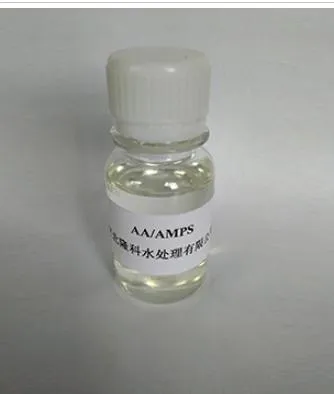Understanding Polycarboxylic Acids: Properties, Applications, and Future Potential
Polycarboxylic acids are a versatile group of polymers widely used in water treatment, cleaning products, concrete admixtures, textiles, and even sustainable materials. Known for their multiple carboxylic acid groups (-COOH) and strong chelating abilities, these compounds offer a blend of performance, safety, and environmental advantages.
Whether you're developing a detergent, treating industrial water systems, or formulating high-performance concrete, polycarboxylic compounds can offer unique benefits. In particular, polyhydroxycarboxylic acid, a greener alternative in this chemical family, is gaining attention for its biodegradability and low toxicity.
Let’s break down the types, functions, and top polycarboxylic acid examples, and explore their expanding range of uses.

What Are Polycarboxylic Acids?
Polycarboxylic acids are polymers or oligomers containing two or more carboxylic acid functional groups (-COOH) in their structure. These functional groups allow them to bind with metal ions, act as dispersants, or modify surface properties in various industrial processes.
They’re typically water-soluble, thermally stable, and reactive in both acidic and alkaline environments. These traits make them suitable for use in a wide range of chemical systems.
Polycarboxylic Acid Examples
Some of the most commonly used polycarboxylic acids and derivatives include:
1. Polyacrylic Acid (PAA)
A synthetic polymer with high water solubility and excellent dispersing power.
Commonly used in scale inhibitors, detergents, and as a thickener in personal care products.
2. Polymaleic Acid (PMA)
Offers strong calcium tolerance and thermal stability.
Used in industrial water treatment and RO membrane protection.
3. Acrylic/Maleic Copolymers
Blends that provide scale inhibition and dispersion in hard water.
Often seen in cooling tower formulations and automatic dishwasher detergents.
4. Polyaspartic Acid
A biodegradable alternative to traditional scale inhibitors.
Used in “green chemistry” water treatment and agriculture.
5. Citric Acid (as a simple polycarboxylic acid)
A natural tricarboxylic acid (TCA) often used in food, pharmaceuticals, and cleaning agents.
These polycarboxylic acid examples differ in molecular weight, charge density, biodegradability, and thermal resistance—each suitable for specific industrial needs.
Polycarboxylic Acid Uses Across Industries
The versatility of polycarboxylic acid compounds allows them to serve many functions across a variety of sectors:
1. जल उपचार
Scale and corrosion inhibition: They chelate calcium and magnesium ions, preventing scale buildup in boilers, cooling towers, and RO membranes.
Dispersants: Keep suspended particles from clumping and settling in industrial and municipal systems.
2. Detergents and Cleaning Products
Used as builders in phosphate-free detergents, softening water and improving cleaning efficiency.
Replace phosphates in environmentally friendly formulations.
3. Concrete Admixtures
Polycarboxylate ether (PCE) is a superplasticizer that enhances flow without adding excess water.
Improves early strength, workability, and setting times.
4. Textile and Paper Industries
Used as sequestering agents in dyeing and bleaching processes.
Improve stability and brightness in paper manufacturing.
5. Agriculture
Aid in micronutrient delivery by chelating metal ions in fertilizer solutions.
6. Cosmetics and Pharmaceuticals
Certain food-grade or natural polycarboxylic acids (like citric acid) are used as pH regulators, preservatives, or excipients.
What Is Polyhydroxycarboxylic Acid?
Polyhydroxycarboxylic acid is a specialized class within the broader polycarboxylic acid family. These compounds contain both hydroxyl (-OH) and carboxylic acid (-COOH) groups on their polymer backbone, offering unique functionality.
Key Features:
Strong chelation due to the combination of OH and COOH groups
Biodegradable and eco-friendly
Low toxicity
Compatible with both acidic and alkaline systems
These properties make them suitable for use in environmentally friendly scale inhibitors, biodegradable packaging materials, and controlled-release agricultural products.
Polycarboxylics vs. Traditional Alternatives
|
Feature |
Polycarboxylic Acids |
Traditional Inorganics (e.g., Phosphates) |
|
Environmental Impact |
Low (phosphorus-free options) |
High (eutrophication risk) |
|
Biodegradability |
Moderate to high |
Low |
|
Efficiency |
High at low concentrations |
Moderate |
|
Stability |
Good thermal and chemical |
Varies |
|
Regulatory Status |
Favorable in green markets |
Increasingly restricted |
As environmental standards become stricter, polycarboxylic solutions are becoming the industry standard for applications requiring high-performance and low ecological footprint.
Polycarboxylic Acids FAQs
Q1: What’s the main advantage of using polycarboxylic acids in water treatment?
A: They prevent scale formation and corrosion by binding with metal ions and dispersing particles—often replacing older, phosphorus-based additives.
Q2: Are polycarboxylic acids biodegradable?
A: Some are. Polyaspartic acid and certain polyhydroxycarboxylic acids are designed for biodegradability, making them suitable for eco-sensitive applications.
Q3: Can polycarboxylic acids be used in drinking water systems?
A: Yes, but only specific food-grade or certified products. Always check regulatory approvals like NSF, EU drinking water directives, or local safety standards.
Q4: What’s the difference between polyacrylic acid and polymaleic acid?
A: Polyacrylic acid offers better dispersion and is more cost-effective. Polymaleic acid has superior thermal stability and calcium tolerance, making it better for high-stress systems.
Q5: Are there natural polycarboxylic acids?
A: Yes. Citric acid is a natural tricarboxylic acid used in food, pharma, and cleaning. Others like alginates and modified starches offer similar functionality.
-
Understanding Polycarboxylic Acids: Properties, Applications, and Future PotentialसमाचारJul.28,2025
-
Scale Inhibitor Explained: How to Protect Your System from Limescale and Hard Water DamageसमाचारJul.28,2025
-
Scale and Corrosion Inhibitors: Essential Chemicals for Industrial Water System ProtectionसमाचारJul.28,2025
-
Polyaspartic Acid: A Biodegradable Polymer for Sustainable ChemistryसमाचारJul.28,2025
-
Isothiazolinones: A Versatile Antimicrobial Class with Industrial Power and Regulatory ChallengesसमाचारJul.28,2025
-
A Deep Dive into 2-Phosphonobutane-1,2,4-Tricarboxylic Acid (PBTC)समाचारJul.28,2025





